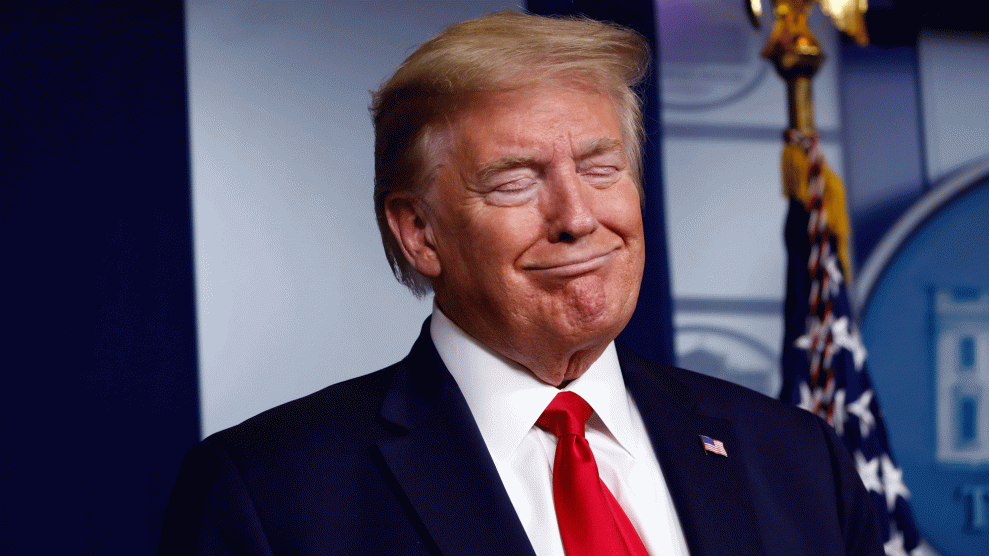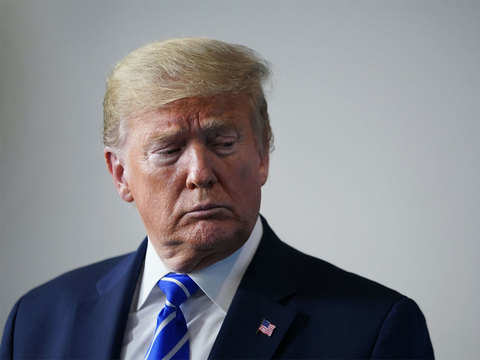93K Death : Trump and Chloro-quine

As worldwide cases of the coronavirus surpassed 5 million, all 50 states have at least partially reopened their economies as Connecticut loosened restrictions Wednesday and Illinois announced major modifications to its stay-at-home order.

Also Wednesday, President Donald Trump said he will soon complete his controversial regimen of the drug hydroxychloroquine, and word came out that his former personal lawyer Michael Cohen will be released from prison.
Also Wednesday, the Department of Health and Human Services said pharmacists would be allowed to order and administer coronavirus tests, even where they previously were not explicitly permitted.
The U.S. has the largest coronavirus outbreak in the world with more than 93,000 deaths and 1.5 million confirmed cases, according to the Johns Hopkins University data dashboard. Worldwide, the virus has killed more than 328,000 people.

Global coronavirus cases top 5M
At least 5 million people are known to have been infected with the coronavirus, showing the massive global reach of the pandemic.
The United States alone accounts for more than 30% of those cases, with at least 1.5 million confirmed coronavirus infections.
Epidemiologists say the number of cases around the world may actually be far higher than what is known as testing capacity lags, some countries may not be fully reporting data and people with the virus may not seek a test or may be asymptomatic.
The virus first broke out late last year in Wuhan, China, before it traveled to Europe, ravaging Italy and Spain, then heading to the U.S., where New York City became the new epicenter.
Donald Trump says he's nearly done with hydroxychloroquine regimen
President Donald Trump said Wednesday he will complete his regimen of hydroxychloroquine "in a day or two."
Trump said Monday he was taking the drug, which he has repeatedly touted as a treatment for the coronavirus despite warnings about its effectiveness and side effects, to prevent contracting COVID-19.
Trump, who according to the White House has tested negative for the disease, stirred up a storm by saying he had been taking the drug daily for about a week and a half as an added measure to avoid being infected by the virus.
Michael Cohen set to be released from prison amid coronavirus outbreak
Michael Cohen is about to become the next prominent figure with close links to President Donald Trump to be allowed out of jail because of the COVID-19 pandemic.
The president's former personal lawyer is set to be released from a New York federal prison Thursday to serve the remainder of his term at home amid coronavirus fears. More than two dozen inmates and officers have been infected with the virus at the Otisville, New York, prison facility where Cohen was serving a three-year sentence for committing financial crimes and lying to Congress while working for Trump.
On May 13, former Trump campaign chairman Paul Manafort was released to home confinement after his lawyers argued his age and several illnesses make him vulnerable to the virus.
Americans carefully venturing back out, according to USA TODAY analysis
Americans are cautiously stepping back out as social distancing measures are relaxed throughout the country, but they're proceeding much less swiftly than they did when originally told to stay home.
A USA TODAY analysis of anonymized cellphone data from more than 16 million devices shows movement fell 15% from the start to the end of March, the first month when shelter-in-place orders were issued. The share of mobile users leaving home nationwide crept up 5% from April 11 to May 11 as restrictions began to get lifted and some cabin fever set in.
Each state began to reduce trips away from home dramatically around March 11. Movement in every state bottomed out sometime between April 7 and 18.
Michigan conservative group holds 'Operation Haircut' on Capitol lawn
The Michigan Conservative Coalition, an organization intended to shape policy and help more conservatives win election, held what was dubbed Operation Haircut outside the Capitol on Wednesday. The group was protesting Gov. Gretchen Whitmer's stay-at-home order and the closing of barbershops and hair salons.
Organizers said those attending were "encouraged to comply with social distancing and other safe practices" such as wearing masks, but people providing haircuts would not be able to remain six feet away from people getting them, as required by the order.
Donald Trump wants June G-7 summit to be staged at Camp David
President Donald Trump hasn't given up on the idea of hosting a G-7 summit in person next month, and he wants to frame it as a sign of moving past the coronavirus.
The meeting was originally scheduled for June in Camp David, but Trump canceled it at the beginning of the coronavirus pandemic. At the time, the White House said the meeting would likely take place by video conference instead.

Trump, who has pressed for a return to normalcy despite warnings of a possible resurgence of the virus, said on Twitter that rescheduling the in-person gathering would show the USA and other countries are on the mend.
"It would be a great sign to all – normalization!" tweeted Trump, who also wrote that the Camp David presidential retreat in Maryland would be the ideal site.
All pharmacists can now administer COVID-19 tests, HHS says
As more COVID-19 tests become available, pharmacists will now be able to order and administer them, even in states or localities where they previously were not explicitly allowed to do so.
The Department of Health and Human Services’ Office of the General Counsel announced Wednesday that licensed pharmacists may conduct such FDA-authorized tests because the Public Readiness and Emergency Preparedness (PREP) Act allows it to preempt such state rules.Many states proactively gave authority for pharmacists to administer these tests. Although others may not have explicitly prohibited this, the HHS guidance removes any uncertainty in those states that haven’t given that explicit authority.
“Giving pharmacists the authorization to order and administer COVID-19 tests to their patients means easier access to testing for Americans who need it,'' Secretary Alex M. Azar II said in a statement. "Pharmacists play a vital role in delivering convenient access to important public health services and information.”
Illinois takes major reopening steps
Illinois, which ranks third among states in total of coronavirus cases with nearly 100,000, announced major updates Wednesday as it enters the third phase of its reopening plan.
Among the modifications to the current mandate aimed at reducing the virus' spread: Restaurants and bars can resume service for outdoor seating May 29. On that date, people will be allowed to gather in groups of 10 or less.
In addition, all state parks, boating, camping, tennis facilities and golf courses can reopen, and so can other enterprises like barber shops, nail salons, tattoo parlors, etc.
“Basically any store that wasn't already open as an essential business can choose to open their doors to in-person shopping," with safety precautions in place, when the state enters Phase 3 of its reopening plan, Gov. JB Pritzker said.
Millions more US jobless claims expected in next Labor Department report
The number of Americans filing new unemployment claims will likely continue to drop, but it's still expected to reach the millions as the economic toll from the coronavirus pandemic ticks on.Between 2.3 million and 2.8 million Americans filed initial applications for unemployment insurance last week, economists estimate. That's down from the 3 million who filed claims the week before and the record 6.9 million who sought assistance in late March.
But if the latest tally, which the Labor Department reports Thursday, matches estimates, it will mean roughly 39 million Americans will have applied for unemployment in just nine weeks, a staggering number that reflects the highest jobless rate since the Great Depression. He also appeared to propose irradiating patients' bodies with UV light, an idea dismissed by a doctor at the briefing.
Another of his officials had moments earlier said sunlight and disinfectant were known to kill the infection.
Disinfectants are hazardous substances and can be poisonous if ingested.
Even external exposure can be dangerous to the skin, eyes and respiratory system.
What did President Trump say?
During Thursday's White House coronavirus task force briefing, an official presented the results of US government research that indicated coronavirus appeared to weaken more quickly when exposed to sunlight and heat.
The study also showed bleach could kill the virus in saliva or respiratory fluids within five minutes and isopropyl alcohol could kill it even more quickly.
While noting the research should be treated with caution, Mr Trump suggested further research in that area.
"So, supposing we hit the body with a tremendous - whether it's ultraviolet or just very powerful light," the president said, turning to Dr Deborah Birx, the White House coronavirus response co-ordinator, "and I think you said that hasn't been checked but you're going to test it.
"And then I said, supposing you brought the light inside of the body, which you can do either through the skin or in some other way. And I think you said you're going to test that too. Sounds interesting," the president continued.
What's the reaction been to Trump's comments?
Doctors warned the president's idea could have fatal results.
Pulmonologist Dr Vin Gupta told NBC News: "This notion of injecting or ingesting any type of cleansing product into the body is irresponsible and it's dangerous.
"It's a common method that people utilise when they want to kill themselves."
Kashif Mahmood, a doctor in Charleston, West Virginia, tweeted: "As a physician, I can't recommend injecting disinfectant into the lungs or using UV radiation inside the body to treat Covid-19.
"Don't take medical advice from Trump."
John Balmes, a pulmonologist at Zuckerberg San Francisco General Hospital, warned that even breathing fumes from bleach could cause severe health problems.
He told Bloomberg News: "Inhaling chlorine bleach would be absolutely the worst thing for the lungs. The airway and lungs are not made to be exposed to even an aerosol of disinfectant.
"Not even a low dilution of bleach or isopropyl alcohol is safe. It's a totally ridiculous concept."
Mr Trump has previously hyped a malaria medication, hydroxycloroquine, as a possible treatment for corona virus, though he has stopped touting that drug recently.
This week a study of corona virus patients in a US government-run hospital for military veterans found more deaths among those treated with hydroxychloroquine than those treated with standard care.
Reacting to the president's remarks on Thursday evening, Joe Biden, his likely Democratic challenger in November's White House election, tweeted: "UV light? Injecting disinfectant? Here's an idea, Mr President: more tests. Now. And protective equipment for actual medical professionals."
What's the US government's advice?
Only this week, the US Centers for Disease Control and Prevention warned Americans to be careful with cleaning products as sales of household disinfectants soar amid the pandemic.
"Calls to poison centers increased sharply at the beginning of March 2020 for exposures to both cleaners and disinfectants," found the agency's weekly morbidity and mortality report.
The US Food and Drug Administration has warned against ingesting disinfectants, citing the sale of bogus miracle cures that contain bleach and purport to treat everything from autism to Aids and hepatitis.
The agency's website says: "The FDA has received reports of consumers who have suffered from severe vomiting, severe diarrhea, life-threatening low blood pressure caused by dehydration, and acute liver failure after drinking these products."




